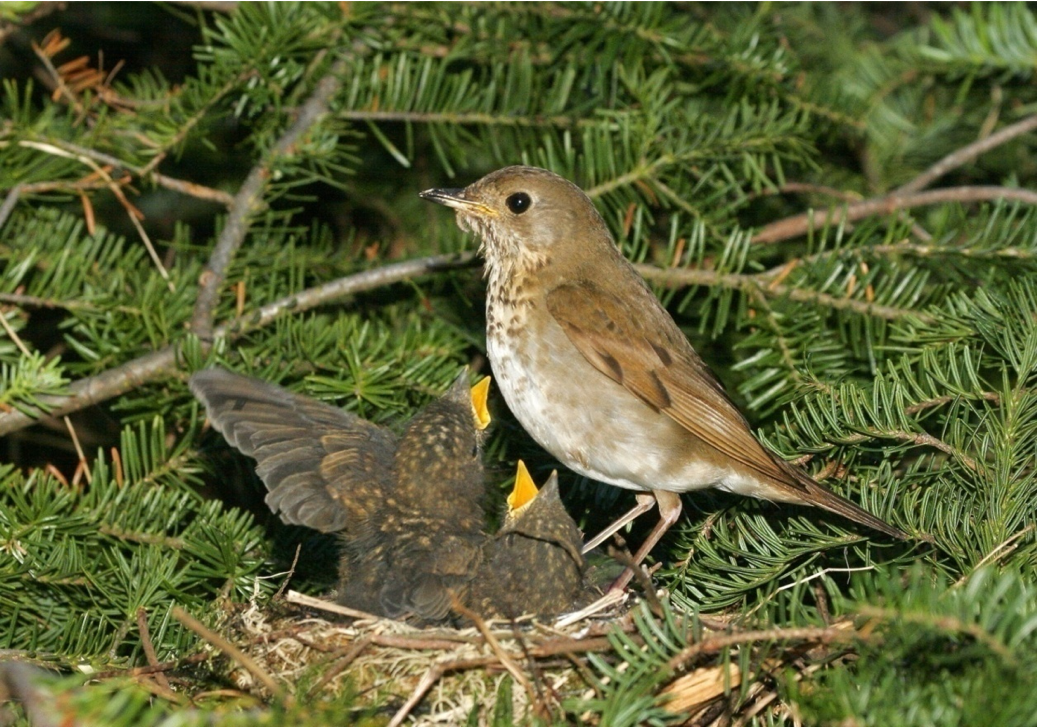 A Bicknell’s Thrush at its nest in a balsam fir
A Bicknell’s Thrush at its nest in a balsam fir
How many Bicknell's Thrush are there in the world?
Abstract
Bicknell’s Thrush (Catharus bicknelli) is one of the most range-restricted bird species in North America. In the United States (U.S.), it occurs only in the disturbed montane forests of fir (Abies balsamea) and spruce (Picea spp.) in the northeastern states of New York, Vermont, New Hampshire, and Maine. Climate change is expected to substantially diminish this vegetation community (>50% extinction from current range) by 2300. Despite the increasingly tenuous conservation status of the species, fundamental demographic parameters remain unknown and overall population size is uncertain. We used N-mixture models in a hierarchical Bayesian framework to predict population size and to elucidate spatial and temporal patterns of Bicknell’s Thrush abundance in the northeastern United States. From 2011 to 2016, as part of Mountain Birdwatch, citizen-scientists conducted 14,552 five-minute point counts at 747 sampling locations along hiking trails. Observers detected Bicknell’s Thrush at 49.4% of points and tallied 1079 observations of the species. Bicknell’s Thrush abundance was parsimoniously modeled as a complex function of elevation, forest canopy cover, and latitude. Using our model results, and the estimated U.S. range of the Bicknell’s Thrush, we produced the first fine-scale (<1.0 ha resolution) abundance estimate and map of Bicknell’s Thrush density across their U.S. range. We predicted the U.S. Bicknell’s Thrush population in 2016 as 71,318 (95% credible interval: 56,080–89,748), and 95% of that population occurred above 805 m. Combining our results with existing estimates of population size in Canada suggests a global population size of <120,000; Bicknell’s Thrush likely have one of the smallest population sizes of regularly occurring bird species within the contiguous United States and Canada. By cross-referencing the U.S. Geological Survey Protected Areas Database, we estimated that 76.6% of Bicknell’s Thrush habitat occurred on conserved lands across the United States and that this habitat supported 84.6% of the predicted population. The White Mountain National Forest (New Hampshire and Maine) is the largest conservator of Bicknell’s Thrush habitat in the United States and supports ~31% of the predicted U.S. population. Our model provides a testable framework for assessing the success of future conservation and management actions on Bicknell’s Thrush populations throughout their U.S. range.